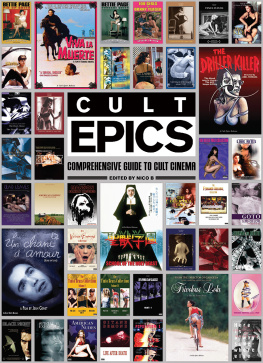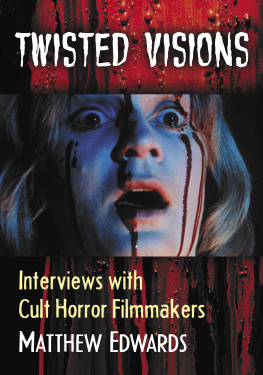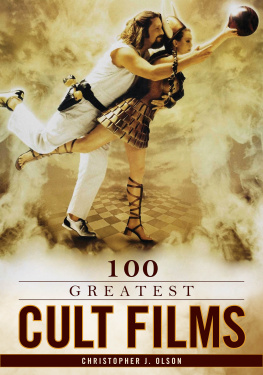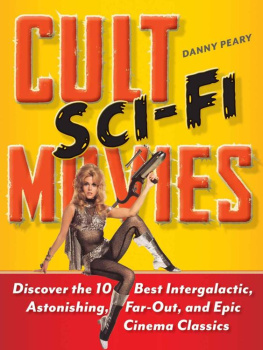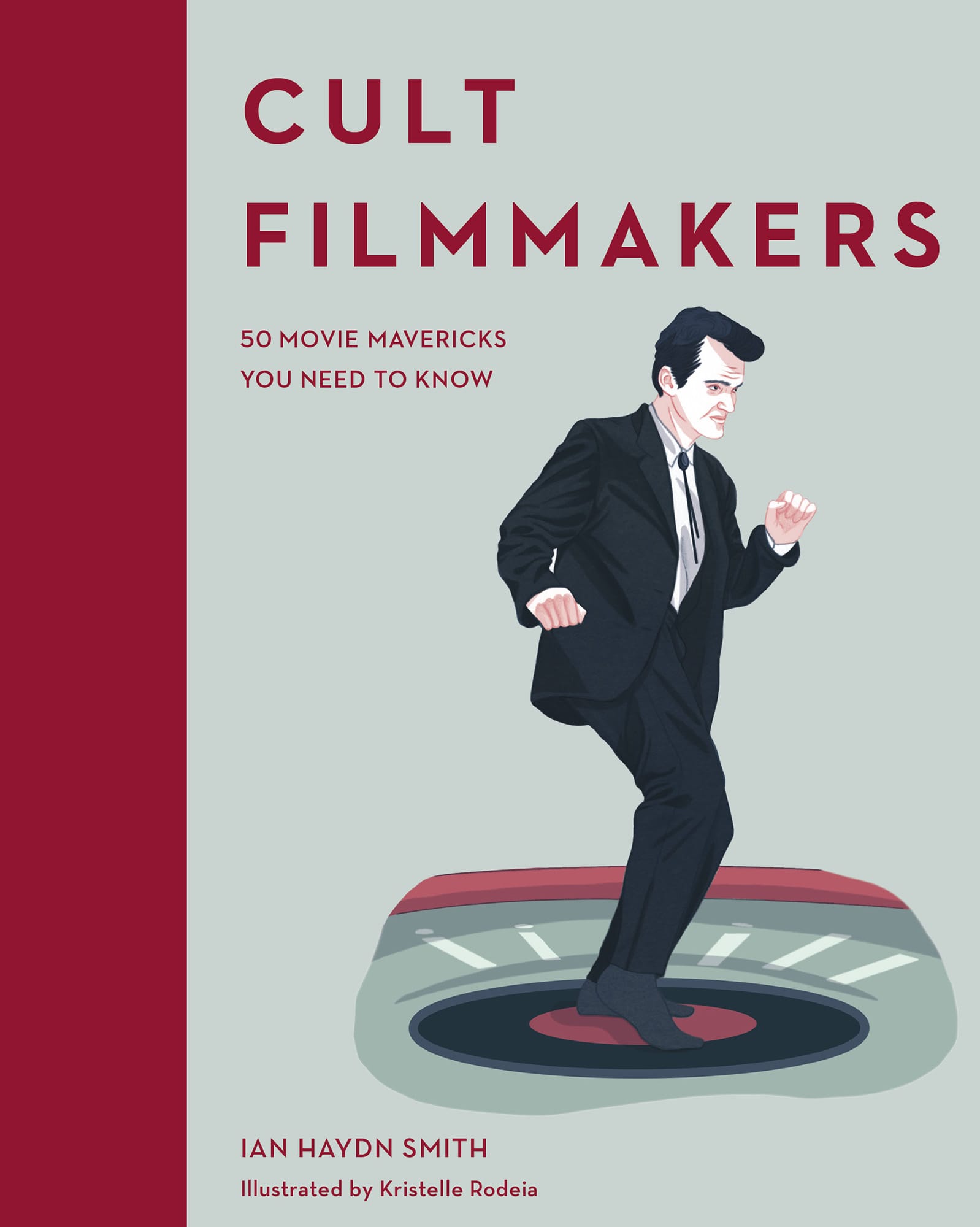Contents
Guide
CULT FILMMAKERS
50 movie mavericks you need to know
IAN HAYDN SMITH

INTRODUCTION

What makes a cult film, or characterises its filmmaker as a cult figure? Has the perception of what makes a cult film altered over the course of the mediums history? And is there a link between the early magical worlds of Georges Mlis, the taboo-breaking dramas of Tod Browning and the more recent, ultra-violent work of S. Craig Zahler (Dragged Across Concrete, 2018) or Panos Cosmatos (Mandy, 2018), directors whose films have crossed over from niche into the mainstream?
That none of the above names are among the 50 featured in this book is some indication of the breadth of filmmakers for whom the label cult has been applied to their work. But these directors are good examples of where to start when understanding what a cult film is and the components that define it.
A cult film can be seen as something that lacks the appeal of more mainstream fare, bringing to audiences an extra factor that can range from the challenging to the kitsch. A film can acquire cult status immediately or after the passing of time and a gradual enhancing of its reputation. It may take more than a generation to fully acknowledge a films cult appeal, with a shift in cultural tastes conferring on it a sense of importance or popularity that it never had when it was first screened. It can be regarded as ahead of its time, misunderstood by original audiences, or, in the case of a film whose quality is dubious, enjoyed for all the reasons that an audience disliked it in the first place. Edward D. Wood Jr. is arguably the best example of the kind of filmmaker whose movies, most famously Plan 9 from Outer Space (1959), are so bad they are good. His legacy lies in the hands of filmmakers such as Tommy Wiseau, whose The Room (2003) is widely acknowledged as one of the worst films ever made. But Wiseau is now a cult figure, who not only travels the world to attend screenings of his film, but also was the subject of a Golden Globe-winning making of feature, The Disaster Artist (2017).

Browning is no less a cult filmmaker than Wood or Wiseau, but his status was achieved through the shock of the unusual. Freaks (1932), a film about a troupe of sideshow performers, was notorious upon first release and was banned in many countries but its reputation and number of admirers have only grown with time. Browning ranks alongside Benjamin Christensen as one of the key cult filmmakers in cinemas first 50 years. (Christensen was chosen over Browning for inclusion in this collection solely for the utter strangeness of his 1922 hybrid documentary Hxan.) But is either more of a cult filmmaker than James Whale? Another director who was working when sound became an integral part of cinema and was primarily associated with horror, Whale differs only in that Frankenstein (1931) and Bride of Frankenstein (1935) were more commercially appealing productions that achieved significant box-office success. However, as a personality, he has become more of a cult figure.
The line between commercially popular and cult films is also blurred in film noir, the thriller subgenre that developed throughout the 1940s and 1950s. Billy Wilders Double Indemnity (1944) and Howard Hawks The Big Sleep (1946) are stylised and morally ambivalent films, but it is Edgar G. Ulmers Detour (1945) and Robert Aldrichs Kiss Me Deadly (1955) that have gained cult status. In the case of Ulmer, his is a low-budget sliver of a feature (its drama is played out in a crisp 68 minutes) that was initially overlooked and so became a discovered pleasure. Aldrichs near-hallucinatory movie is the more obvious cult contender: a drama that pushes at the boundaries of the genre and ends with a nuclear apocalypse.
The popularity of cult films increased significantly from the late 1960s. In the United States, the failure of the studio system to reflect changes in audience tastes resulted in a search beyond the mainstream for films that entertained or challenged. A similar sentiment existed in other countries, where social mores were in a state of flux and traditional films evinced a moral, political or cultural perspective that spoke only to more conservative tastes. Film movements exploded these ideas, offering a vibrant alternative to the status quo and frequently challenging film form.
One side effect of this revolution was the midnight movie: a film whose appeal lay beyond the mainstream and whose popularity was first tested on audiences happy to watch films late into the night. The Elgin Theater in New York became the spiritual home of the midnight movie, a mecca for this new kind of film. And at the vanguard of this wave was Alejandro Jodorowskys trippy western of sorts, El Topo (1970), in which the director plays a vengeful gunslinger, venting his wrath on ideologies that form the bastion of the worlds civilisations. It was less a film to enjoy than an experience in which to immerse oneself, with the consumption of illicit substances a likely boon in furthering the enjoyment of time spent in Jodorowskys strange universe. That film was joined by John Waters early work, The Harder They Come (1972), Jim Sharmans The Rocky Horror Picture Show (1975) and David Lynchs beautiful and strange fever dream Eraserhead (1977). At the same time, in Italy, horror filmmakers were pushing the boundaries of art and taste, first with Giallo a subgenre of horror and then beyond, reaching new heights of grotesque and unpleasantness with Ruggero Deodatos Cannibal Holocaust (1980) and Lucio Fulcis The New York Ripper (1982). Their US counterparts included George A. Romero with his Dead series (1968), Wes Craven with The Last House on the Left (1972) and John Carpenter, who has remained one of the quintessential US cult filmmakers over the past 50 years.
More recently, the notion of cult filmmakers and cult films has become a slippery proposition. Whereas a director or film was once defined as cult by their peripheral appeal to mainstream tastes, the presence of infinite channels to view such work, social medias engagement with the Other and the commercialisation of the very idea of cult appeal make it difficult to distinguish between pretenders and the genuine article. Moreover, who is the arbiter of such distinctions? Cult Filmmakers, shining a light on just a handful of names, only highlights how problematic a canon of cult filmmakers can be.

Rather than offering an authoritative guide through a rich history of cult filmmaking, this book aims to be another voice in the conversation about cult cinema. The individuals featured represent a small number of filmmakers whose work might have found increasing popularity, but nevertheless remain distinct in their place within film history. And their status need not preclude widespread success. Like Zahler and Cosmatos, Quentin Tarantino has channelled the vision and spirit of many other cult filmmakers to imbue his own work with a similar spirit. Some might regard him as more of a parodist the archetypal postmodern filmmaker in his assembling of a bricolage of tropes and genre elements and not a genuine cult filmmaker. But


